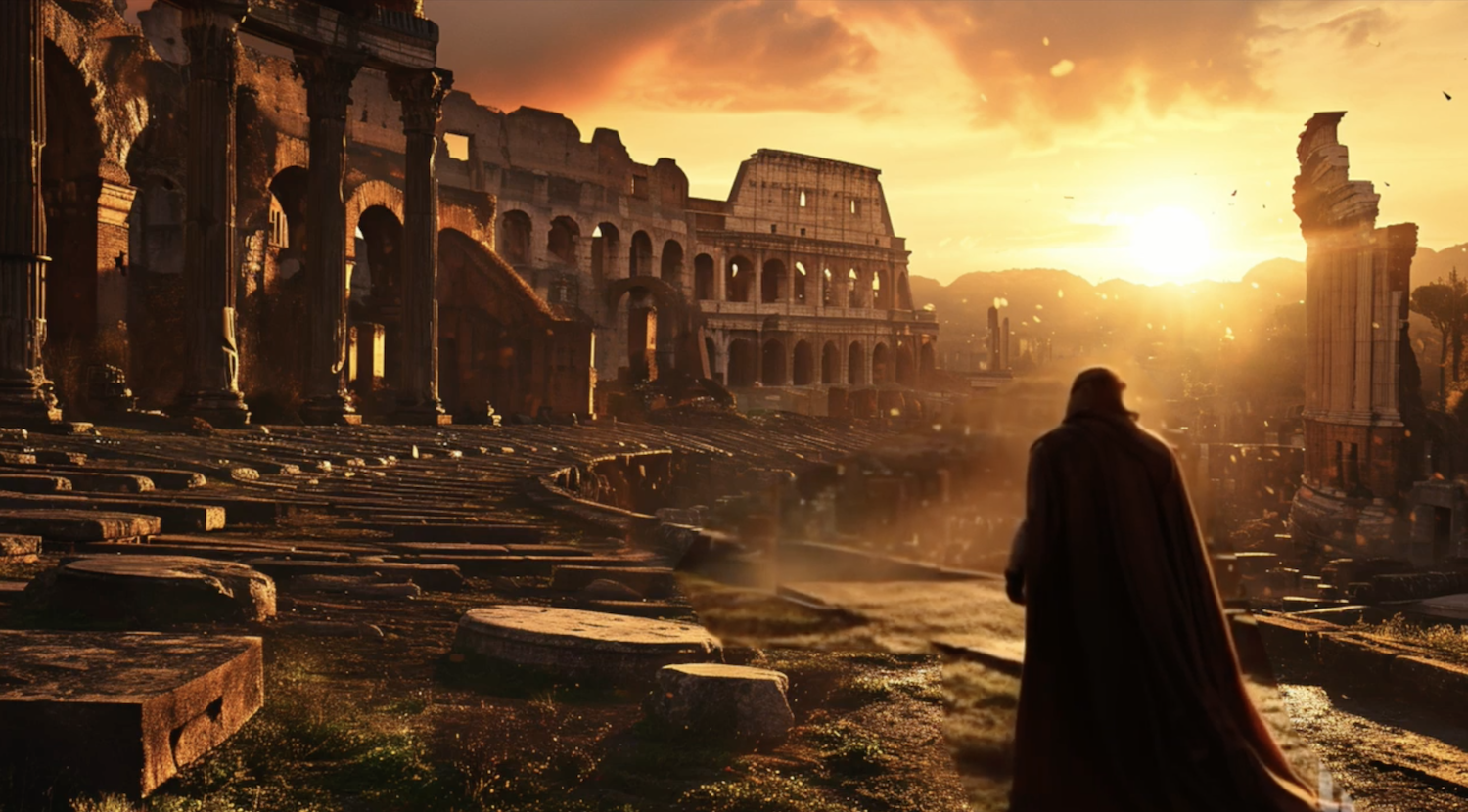10 Striking Parallels Between the Star Wars Saga and the Fall of the Roman Empire

George Lucas the creator of Star Wars once said, “I love history, so while the psychological basis of ‘Star Wars’ is mythological, the political and social bases are historical.” Indeed, many aspects of the Star Wars myth are reflected in the history of Rome’s decline and fall. Here are 10 striking parallels between the Star Wars saga and the Fall of Rome.
1.) The beginning of the end for the Roman Empire was when its republican system of government was replaced by an authoritarian system under the Caesars. In Star Wars the transition from the democratic Galactic Republic to the dictatorial Galactic Empire over the course of the franchise mirrors that of Rome. Although it took almost 500 years, the lack of representative government eventually eroded the Roman system from within and led to its downfall. In Star Wars it happens much faster.
2.) In the decades leading up to the fall of the Roman Republic, power became increasingly concentrated in the hands of the executive branch resulting in the rise of two temporary dictators, Marius and Sulla. Looking to them for precedent, Caesar then famously crossed the Rubicon and declared himself dictator for life. Likewise, the Galactic Republic of Star Wars sees a similar shift from senatorial control to executive power in the years leading up to the establishment of authoritarian rule under Emperor Palpatine.
3.) In Star Wars, Senator Palpatine uses his popularity with the people to exploit a crisis and claim emergency powers, just as Julius Caesar did in Rome. Caesar was assassinated by members of the Roman Senate for his attempted power grab, but after Caesar’s death, his nephew Augustus carried the effort forward, using the ensuing civil wars to justify his dictatorial actions in the name of state security. In Star Wars the route to dictatorship is more straightforward but carries the same twisted justification.
4.) In Star Wars, Emperor Palpatine’s secret clone army is answerable to him alone and is key to his seizure of power. In Rome, the Marian reforms established soldiers loyal to their generals rather than to the state, a key factor in allowing General Julius Caesar to march on Rome and declare himself dictator for life. After Caesar’s death, Augustus followed in his uncle's footsteps, using his command of the army to seize and hold power for himself.
5.) In Star Wars, Emperor Palpatine is initially popular with the people, presenting himself as the guarantor of stability after a brutal civil war. Similarly, in Rome, Emperor Augustus was popular throughout his reign for having brought peace and stability after war. At the same time, members of the Roman Senate stewed, angry at having been marginalized by the dictator but were viewed as elitists by the people and therefore failed to win their sympathy. Similarly, in Star Wars.
6.) In Rome, Emperor Augustus didn’t attempt to abolish the Roman Senate but allowed it to keep on functioning as a rubber stamp for the Emperor’s edicts. Similarly, in Star Wars, Emperor Palpatine maintains the charade of a functioning representative government, even as he strips the Imperial Senate of any real power.
7.) The name Palpatine has Latin roots and is derived from the Latin word Palpare, meaning “too feel”. More than that, however, it is reminiscent of the Latin word Palatine, which means “of the palace”, and is the name of the Palatine Hill in Rome where the imperial palace once stood. Other characters in Stars Wars, such as Chancellor Valorum and Commander Tarkin have obvious Roman referents in Emperor Valens and Tarquin the Proud, fifth king of Rome.
8.) The symbols of Rome are seen throughout Star Wars. The use of the imperial eagle on the flag of the empire has its antecedent in Rome. The iconic six-spoked imperial cogwheel is adapted from the symbolic wheels of offices pictured in the Notitia Dignitatum, an illustrated list of administrative offices from the Late Roman Empire. The Jedi symbol of a bird rising is modeled on the Aquila, the rising eagle featured on the military standards carried at the head of the Roman legions.
9.) The Galactic Empire of Star Wars is a vast, overextended empire under constant threat from rebellions within and without. Likewise, the Roman Empire was stretched thin by centuries of military expansionism and made vulnerable to uprisings from within and without. In addition, both empires were administered by sprawling bureaucracies hampered by inefficiency and corruption.
10.) With the Fall of the Roman Empire in the West in 476 AD competing warlords seized control leading to a prolonged period of chaos and destruction. Similarly, as the Galactic Empire falls apart in Star Wars competing warlords take over, carving out territories and fighting each other. In Star Wars, however, the New Republic eventually gains the upper hand, and the whole saga is tied up neatly with a happy ending. There was no such happy ending for the Roman Empire. After the fall of the Roman Empire in the West, a post-apocalyptic hellscape existed for a century or more. That tragic outcome will be the subject of next week’s blog post.
